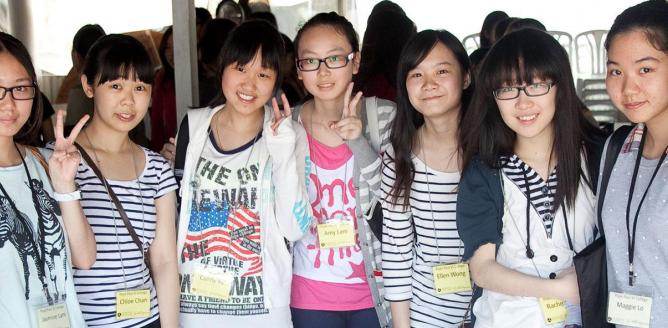“One thing I always tell young girls: Never let anybody tell you can’t do it. Growing up, they’d look at me like, Really? Even when I did my college visit, I had someone tell me most people change their minds after the first year. I never gave up. Even when I was having teachers tell me, just take a break from math, you can take this class next year. I said, ‘No, I’m going to take it now. I kept pushing for it.” Michelle Haupt, Operations Engineer, NASA.
This summer the CEO of tech giant Google, Sundar Pichai, reassured teenage girls at the Technovation Challenge World Pitch Summit Award Ceremony that there was a place for them in tech: “I want you to know that there’s a place for you in this industry, there’s a place for you at Google. Don’t let anyone tell you otherwise.” However after recent controversy in Silicon Valley (including a male Google employee being fired for arguing in a memo that his female coworkers were less capable in tech, cases of sexual harassment, discrimination and gender pay inequities) highlight why many women still feel shut out of STEM (science, technology, engineering and mathematics) fields.
There is overall a shortage of skilled workers and students in STEM. But more alarming is the shortage of female skilled workers and students in STEM. Statistics vary by country and by discipline, but generally, women make up only 15-25% of the current STEM workforce and the imbalance broadening.
Feeling shut out of STEM can start surprisingly early for girls. Research shows that even where there is no difference in STEM ability a large divide in ‘perceived competence’ between girls and boys can start as early as age five. Confidence gaps between children around STEM subjects can quickly become ingrained leading to too many girls removing themselves from STEM subjects at ages 11 or 12.
In Hong Kong, girls have limited exposure to STEM subjects at the Diploma of Secondary Education (DSE) level, with mathematics being the only STEM-related compulsory subject while physics and other science subjects are electives. In 2015, physics and ICT featured in boys’ top 10 subject choices with 26.5% of boys taking physics versus 10.2% of girls and nearly three times as many boys taking ICT as girls. For girls, physics was a distant tenth most popular subject and ICT did not feature in their top 10 subjects. These early subject choices are important because they are pivotal to whether girls go onto STEM-related university disciplines and the jobs of tomorrow.
So how do we address this problem? At TWF we launched our innovative Girls Go Tech programme as a pilot 3 years ago in 3 Hong Kong Schools. We grew to 9 schools in 2016 and our 2017-2018 programme will be running in a record 13 schools. Our year-long school-based programme aims to encourage junior secondary school girls from under-privileged backgrounds to pursue traditionally male-dominated STEM related subjects to maximise their future career options. What results are we seeing? Our 2016 independent impact assessment shows that girls experienced marked improvements in analytical and communications skills as well as increased creativity and importantly increased intentions to study or work in STEM or ICT fields.
Some of humanity’s greatest challenges and opportunities are being tackled and presented through STEM industries. But women and girls risk missing out. We have an opportunity to bring more women and girls into STEM. Can’t we further break down gender barriers by seeing more women creating and owning technology rather than being just consumers of it?
Get in touch at Fiona.Nott@twfhk.org. Have a great week.





















